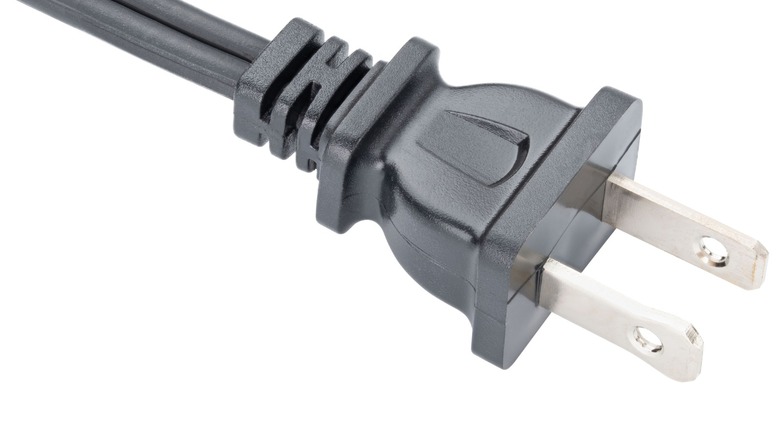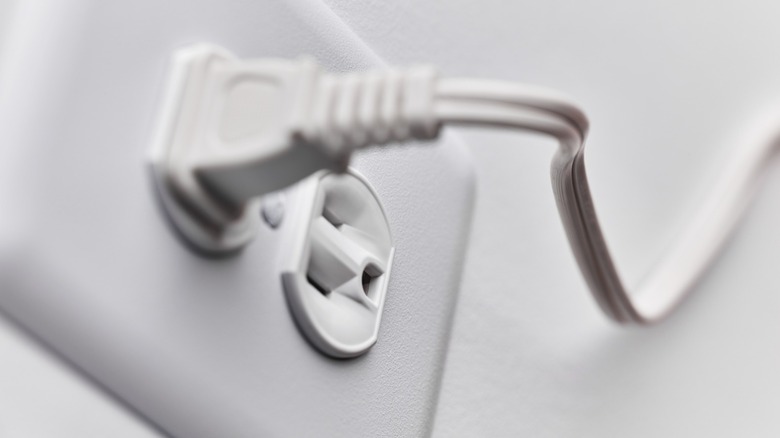What Are The Holes In Electrical Plug Prongs For?
The US uses two standard electrical plug types: Plug Type A and Plug Type B. Both have two parallel pins for power, while the latter has an additional grounding pin for safety. But if you look closely at both, you'll notice that the two parallel power pins have one hole in each.
Many say that the reason these holes exist is to help the plug stay attached to a wall socket. After all, it does make sense for a plug to have an attachment point to prevent it from being accidentally unplugged. However, if you disassemble most outlets (don't do this while it's powered) or peek into one of its active holes (please don't put anything in it), you'll see they do not have a bump that will hold a plug in place. Instead, the prongs are held purely by friction.
Thankfully, we can get the answer directly from NEMA, or the National Electrical Manufacturers Association — the industry group that sets the technical standards for America's electrical equipment. According to the NEMA Standards Publication, "Hole in flat blade is optional, and is intended for manufacturing purposes only. However, if used, it must be located as per the dimensions shown above."
That means the holes we see in the numerous plugs in our homes are there simply because their maker decided to put them in. This was further confirmed by one expert from the Underwriters Laboratories, who told Cecil Adams of the question-and-answer column, The Straight Dope, that manufacturers use it "to hold the prongs in place while the plastic part of the plug is molded around them."
Other incidental uses of the holes in electrical plug prongs
Although we've already settled why these holes exist in electrical plugs (and why some plugs don't have them), people have found one other creative and safety-related use for them. When an appliance is out of order or being serviced, some people put a plastic tie (which can be reused with a little trick) through one or both holes and attach a label saying that it isn't functional. This is a pretty useful use case, especially if you have power tools currently awaiting repairs in your garage.
If you have your own shop, you can also use this to ensure that you don't forget to put on your accessories to stay safe while woodworking. That way, when you use one of the last remaining corded tools from Milwaukee, you're reminded to check yourself if you have your goggles and other equipment on before using it.
Some manufacturers might also attach a plastic band and label to one of the holes in the plugs of their appliances, ensuring that any new user would see that they must do something before plugging their new device into the wall. For example, a washing machine might have some safety tape and foam inside the drum. So, the brand maker can put a warning label attached to the prong hole telling the user to remove them before using the appliance. Even if they do not read the manual (like most people), the user is less likely to damage their new product because of ignorance.

